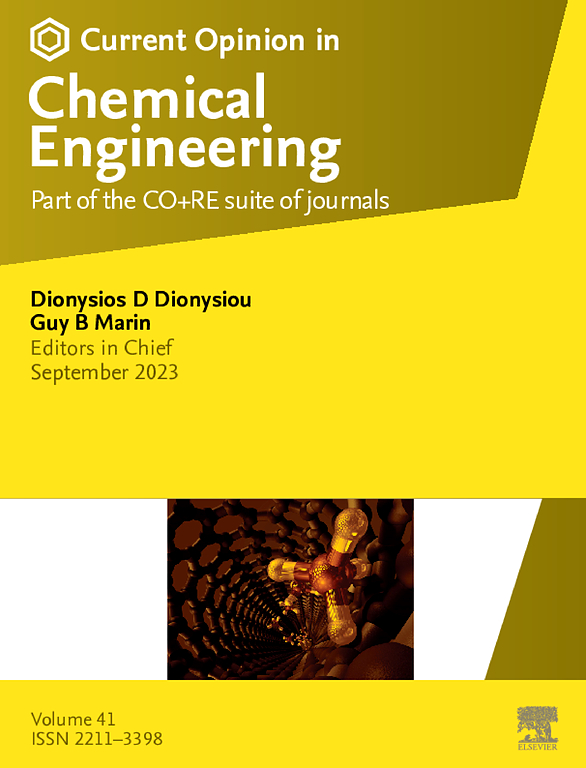Photogenerated charge carriers in photocatalytic materials for solar hydrogen evolution
IF 6.8
2区 工程技术
Q1 BIOTECHNOLOGY & APPLIED MICROBIOLOGY
引用次数: 0
Abstract
Solar radiation–based green H2 evolution has emerged enormous interest due to photocatalysts hastening the solar energy conversion into chemical energy and repeating the cycle performance. Recently, CdIn2S4 (CIS) n-type semiconductors and metal-organic frameworks (MOFs) having high-porous structures have emerged as excellent photocatalysts for green and sustainable energy generation due to their specific properties (e.g. durability, high surface area, tunable band gap, etc.). Novel composites based on combining CIS and MOFs enable broad light absorption, better separation, and transport of photogenerated carriers, improving solar energy utilization. In particular, charge migration at the interface between MOFs and CIS is noteworthy that the accumulation of photogenerated electrons on CIS conduction band causes remarkable enhancement of photocatalytic H2 production. Covering the literature articles of the past 3 years, this mini-review presents efficient photocatalysts via simultaneous cooperation of CIS and MOF engineering as well as promising materials in H2 production. First, this work illustrates applications of CIS- and MOF-based photocatalysts for solar H2 evolution fabricating advanced photocatalysts with superior absorbed visible light. Last, future perspectives and challenges on emerging CIS- and MOF-assisted heterojunctions are provided, which create novel designs for materials by coupling CIS and MOF morphologies to create clean energy generation.
太阳析氢光催化材料中的光生载流子
由于光催化剂加速太阳能转化为化学能并重复循环性能,基于太阳辐射的绿色H2演化引起了极大的兴趣。近年来,具有高多孔结构的CdIn2S4 (CIS) n型半导体和金属有机骨架(mof)由于其特殊的性能(如耐用性、高表面积、可调带隙等)而成为绿色和可持续能源生产的优秀光催化剂。基于CIS和MOFs的新型复合材料可以实现广泛的光吸收,更好的分离和光生载流子的传输,提高太阳能的利用率。特别值得注意的是,mof和CIS之间界面的电荷迁移,光生电子在CIS导带上的积累导致光催化制氢的显著增强。本文回顾了近3年来的文献,介绍了CIS和MOF工程同时合作的高效光催化剂以及在制氢方面有前景的材料。首先,本研究阐明了CIS-和mof基光催化剂在太阳能析氢中的应用,制备了具有优越可见光吸收的先进光催化剂。最后,提出了CIS和MOF辅助异质结的未来前景和挑战,这些异质结通过耦合CIS和MOF的形态来创造新的材料设计,从而产生清洁能源。
本文章由计算机程序翻译,如有差异,请以英文原文为准。
求助全文
约1分钟内获得全文
求助全文
来源期刊

Current Opinion in Chemical Engineering
BIOTECHNOLOGY & APPLIED MICROBIOLOGYENGINE-ENGINEERING, CHEMICAL
CiteScore
12.80
自引率
3.00%
发文量
114
期刊介绍:
Current Opinion in Chemical Engineering is devoted to bringing forth short and focused review articles written by experts on current advances in different areas of chemical engineering. Only invited review articles will be published.
The goals of each review article in Current Opinion in Chemical Engineering are:
1. To acquaint the reader/researcher with the most important recent papers in the given topic.
2. To provide the reader with the views/opinions of the expert in each topic.
The reviews are short (about 2500 words or 5-10 printed pages with figures) and serve as an invaluable source of information for researchers, teachers, professionals and students. The reviews also aim to stimulate exchange of ideas among experts.
Themed sections:
Each review will focus on particular aspects of one of the following themed sections of chemical engineering:
1. Nanotechnology
2. Energy and environmental engineering
3. Biotechnology and bioprocess engineering
4. Biological engineering (covering tissue engineering, regenerative medicine, drug delivery)
5. Separation engineering (covering membrane technologies, adsorbents, desalination, distillation etc.)
6. Materials engineering (covering biomaterials, inorganic especially ceramic materials, nanostructured materials).
7. Process systems engineering
8. Reaction engineering and catalysis.
 求助内容:
求助内容: 应助结果提醒方式:
应助结果提醒方式:


